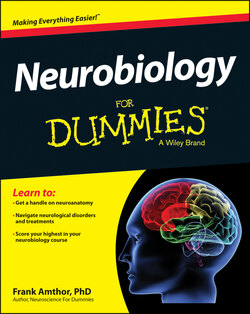Читать книгу Neurobiology For Dummies - Frank Amthor - Страница 56
Transcription mechanisms
ОглавлениеTranscription occurs in the cell nucleus. The transcription process “reads” the DNA code to create a matching messenger RNA molecular template that will exit the nucleus and be used to synthesize proteins. The RNA strand is complementary to the DNA strand, just like the two single DNA strands are complementary to each other in the double helix, except that in RNA the nucleotide uracil takes the place that thymine occupies in DNA.
In transcription, one strand of the DNA double helix — the template strand — is used to form the complementary mRNA sequence. The transcription process has three stages that are regulated by transcription factors and co-activators:
Initiation: In this first part of transcription, DNA is partially “unzipped” by the enzyme helicase, allowing access to the DNA nucleotide sequence for copying. Transcription factors bind the promoter region of the gene, which is a control region immediately preceding the beginning of the gene. Polymerase, the molecule that copies DNA into RNA, binds to a complex of transcription factors at the promoter.
Elongation: RNA polymerase unwinds the DNA double helix, moves down it, and elongates the RNA transcript by adding ribonucleotides in a 5' to 3' direction (refer to the earlier section, “DNA replication”). The RNA polymerase “reads” the DNA strand sequentially and produces a single strand of messenger RNA (complementary to the DNA sequence that is its template).
Termination: When the RNA polymerase reaches the end of the gene, the mRNA and polymerase detach from the DNA. The single strand of newly synthesized mRNA leaves the nucleus through nuclear pores and migrates into the cytoplasm.
